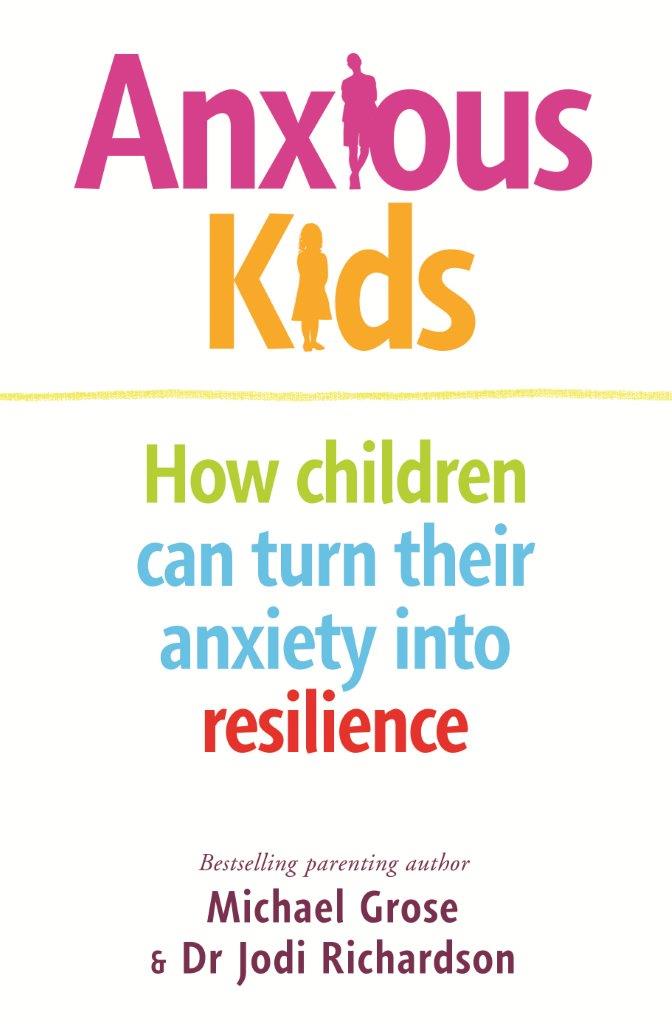 When one of my friends came over for a coffee recently, she looked tired and stressed. She had had her four-year-old granddaughter to stay for a week whose parents are finding her difficult and needed a break. She loves her to bits but trying to manage the moods of this anxious child and to keep her happy had been a real mission.
When one of my friends came over for a coffee recently, she looked tired and stressed. She had had her four-year-old granddaughter to stay for a week whose parents are finding her difficult and needed a break. She loves her to bits but trying to manage the moods of this anxious child and to keep her happy had been a real mission.
Anxious kids are very common these days and many other grandparents may well find themselves in a similar situation. In our rapidly changing world, anxiety has reached epidemic proportions.
In Anxious Kids: How children can turn their anxiety into resilience Australians Michael Grose, bestselling parenting author, and wellbeing expert Dr Jodi Richardson, have written a very practical book on how to recognise anxiety in your child and how to help them to understand and manage it. (It is a useful guide for grandparents too but do share it with parents first so you are all on the same page and can work together.) Both authors have experienced anxiety themselves, so they understand it well.
Educating children about what is happening in their brains when they become anxious is a first step.
It is normal to worry, feel pressure or feel stressed about a situation or an upcoming event, but afterwards we settle down again.
But anxious children and teenagers (and adults too) will often experience persistent and unrealistic worry and a sense of dread. Their brain is overly sensitive to potential threats, influencing their thoughts as well as how they feel and act.
Parents can help by keeping calm, not overreacting (your stress can add to theirs) and responding initially with empathy. Let your child know that you get how they feel. But as well as being nurturing it is also important to then challenge your child not to walk away from their fears but to do the things which are important to them despite their feelings of anxiety. It could be taking part in a school play or staying the night at a friend’s house.
A set of tools to help them to manage an anxious episode is provided. Some, like deep breathing which calms the brain, should be practised before a stressful episode arises, so when it occurs, they already know how to calm their brain.
As well as deep breathing, the anxiety toolbox in this book includes a range of other techniques including mindfulness, storytelling and a gradual ‘stepladder’ approach. How to use each tool is explained clearly in language that children, as well as parents, can understand,
Lifestyle factors are also important to help to decrease levels of anxiety and contribute to a child’s mental health and wellbeing. These include making sure they get plenty of sleep, eat healthy food that promotes gut health, and managing their screen time responsibly so there is time to play and have fun and spend time outside in the bush or on the beach.
The authors caution that their book not intended as and should not be relied upon as medical advice. Parents should consult a medical practitioner if they are concerned about their child’s mental health. And if your GP refers you to a psychologist make sure that it is the right one for your child and if not ask to be referred to another. ‘Remember the jeans: the right pair for one child could be all wrong for another.’ They say.
I think this book is well worth reading for parents who are raising an anxious child to increase their understanding of what is causing it and what they can do to help them to manage it.
Anxious Kids. How children can turn their anxiety into resilience by Michael Grose and Dr Jodi Richardson. Imprint Penguin Life Australia. RRP $40.
Reviews by Lyn Potter
Parent and grandparent, Avid traveler, writer & passionate home cook








Join the Discussion
Type out your comment here:
You must be logged in to post a comment.